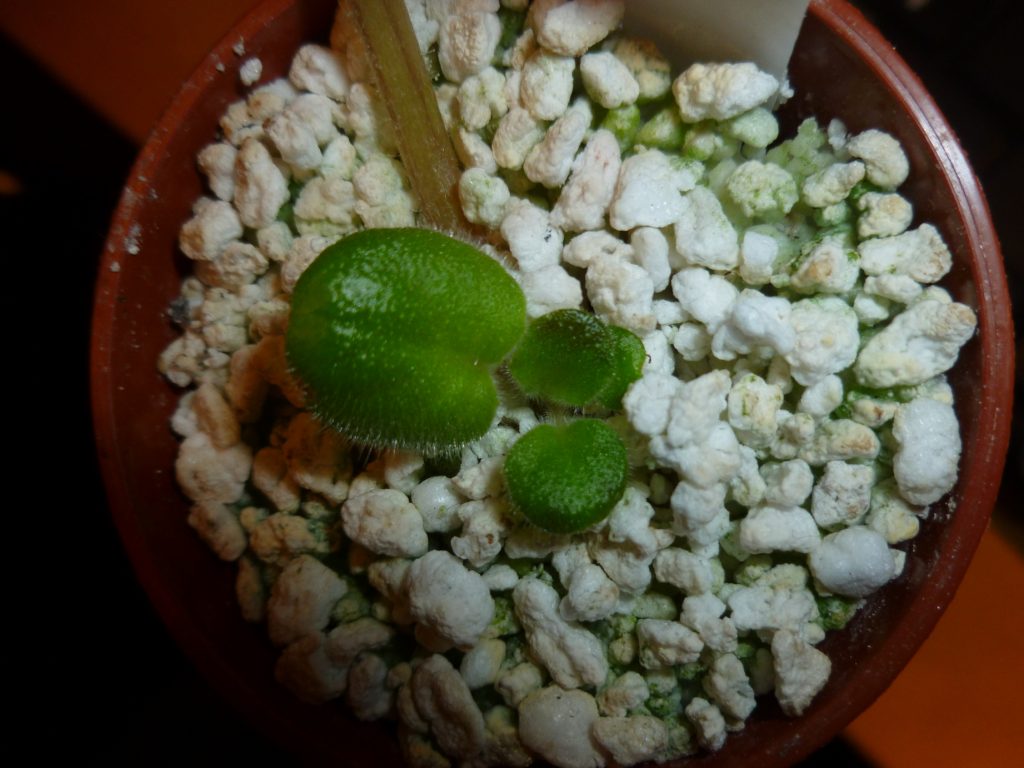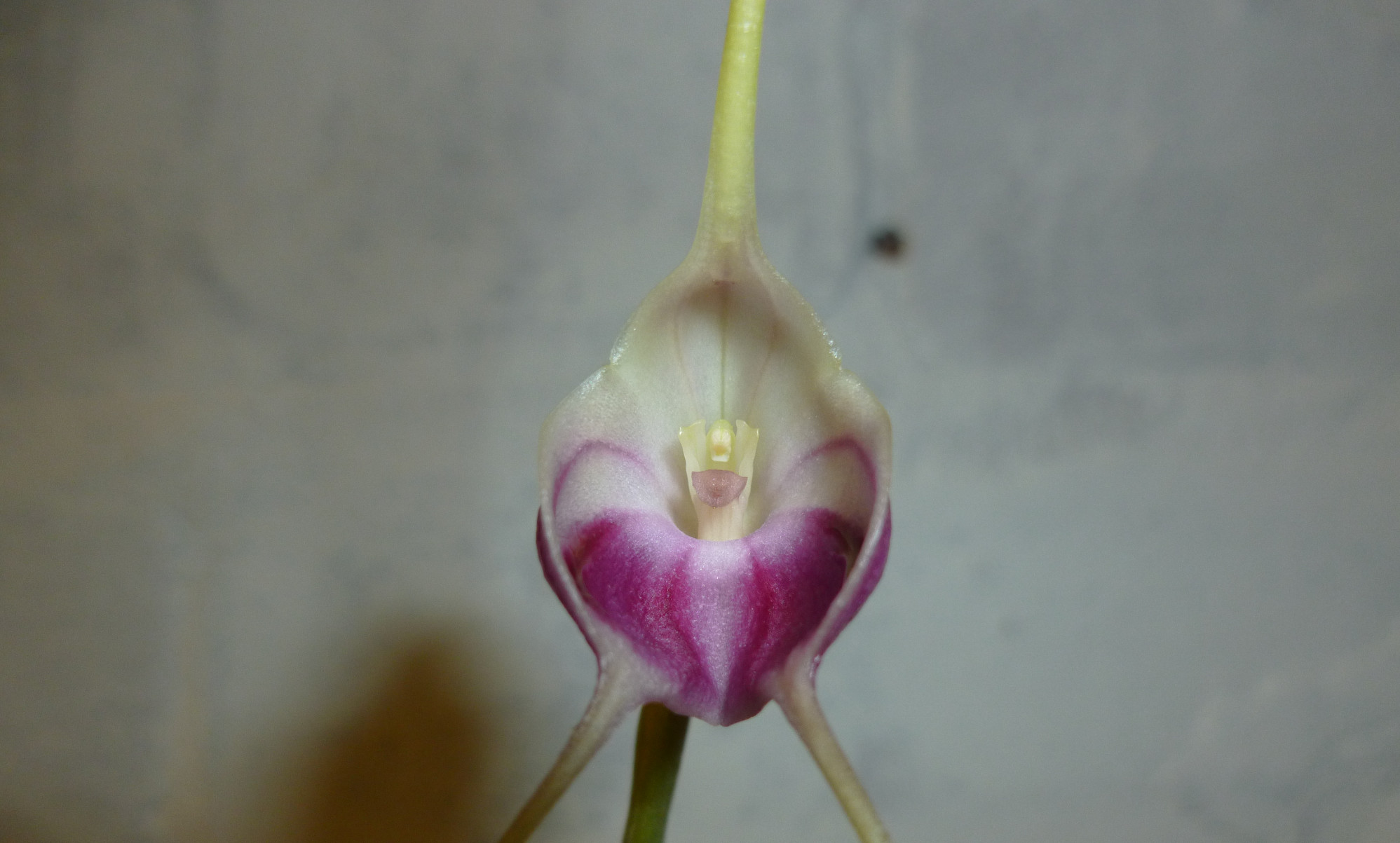Anyone following my twitter feed (anyone?) would have seen my recent pictures of African violets (saintpaulia). I started with a couple of these charming little plants mostly out of curiosity and a desire to grow something on my windowsill to brighten up my home office a little. My initial couple of plants didn’t do well (with one exception) so I read a bit more and tried a couple of further plants. Happy to say I now seem to have cracked it – I now have about 11 big plants of various types and plan to get more. They really do brighten up my home office and have the added advantage, that unlike my other plants I can hand them off to people without them wondering what it is I’ve just handed them!
I almost always try some sort of propagation of my plants because – well free plants. Propagation for AV seems easy but always has caveats attached; trim the stalk; but not too much; not too much water; you can start them in water alone; middle leaves only; etc etc I started a few off in my standard mix (1/3 each peat, perlite and vermiculite) kept reasonably moist in a propagator out of full sun. Then I decided to get creative. I’d been reading a lot about hydroponics and the various methods used. Being a bit techy it appeals to both that side of me as well as the plant lover.
The simplest form of hydroponics seems to be wicking – something that is also familiar to AV growers as a means of keeping the soil based medium wet. A wick (in my case cotton rope) is placed in water with the other end stuffed into the base of a pot containing what you’d like to grow. Water is moved by capillary action from the water store to the pot keeping the plant (or cutting) moist without getting it wet. Hydroponics simply means a soil-less medium, but the process is the same.
For my version I’ve used small seedling pots that conveniently fit into the mouth of mayonnaise, pasta sauce and peanut butter jars. The wick is wrapping around the inside of the pot which is then filled with perlite. The other end of the wick dangles into a water reservoir held in the bottom half of the pot. A very weak dilution of AV fertilizer is added to the water as well. Finally the pot is wrapped in silver duct tape, both to keep the water from getting too warm and also to slow the algae growth in the weak fertilizer water mix.
Basic setup is show in the pictures below
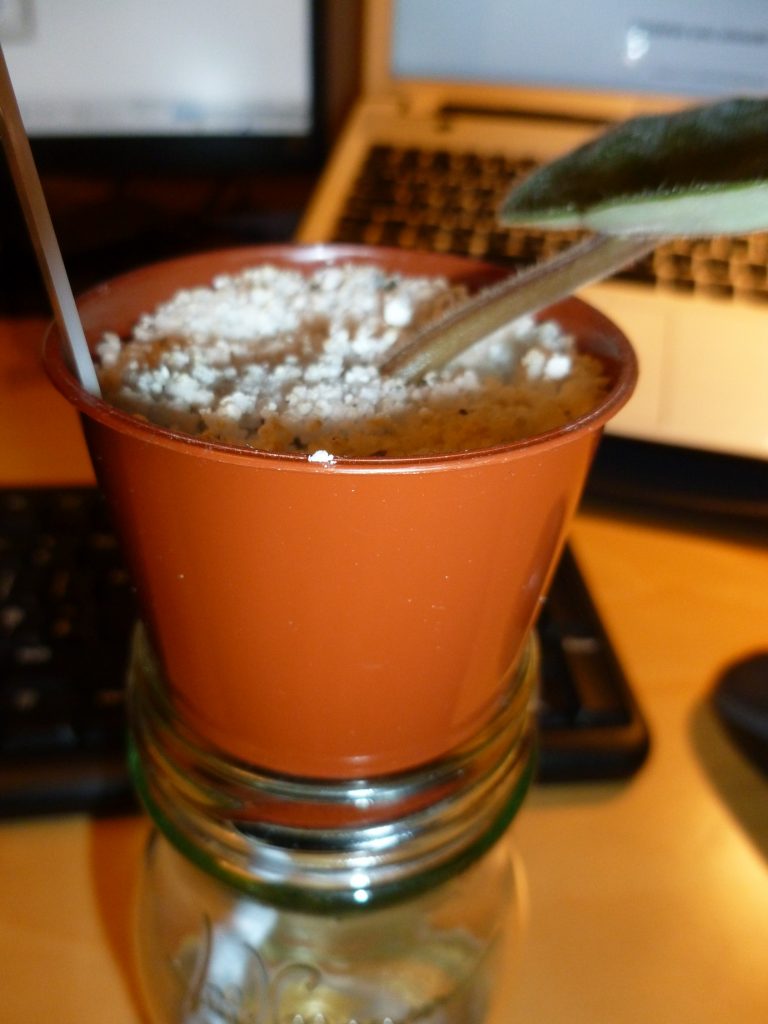
Place a leaf into the perlite filled pot place into the mouth of a suitable sized jar
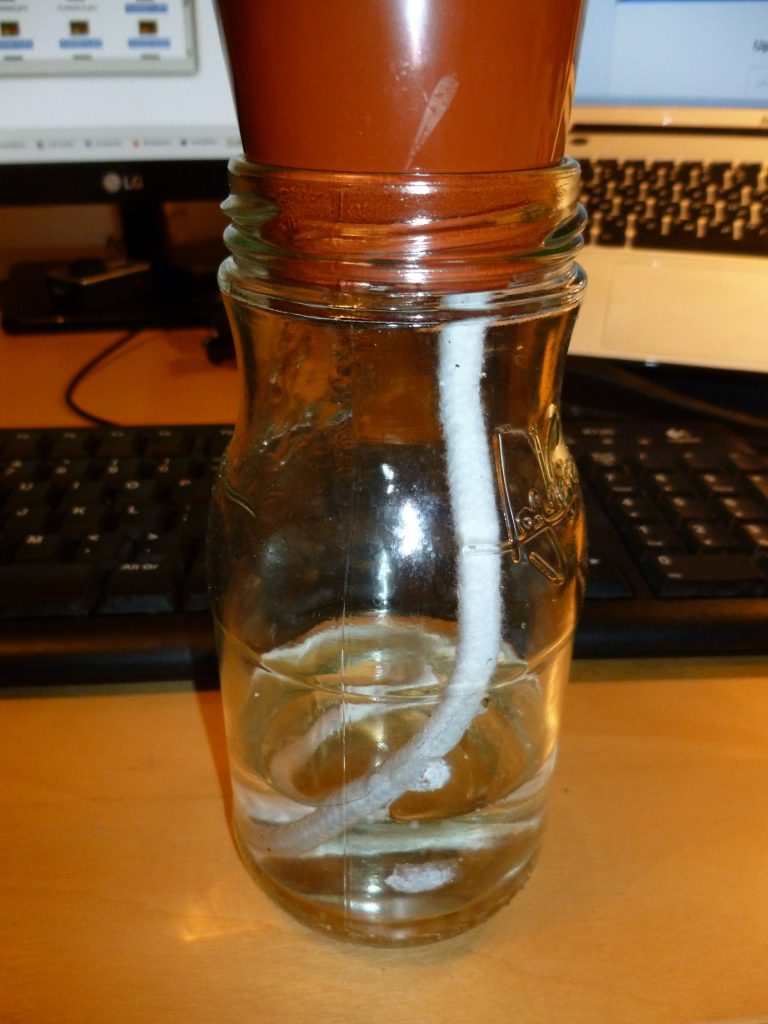
The cotton wick is wrapped around the inside of the pot surrounded by media (perlite). The other end reaches down into a reservoir of water.
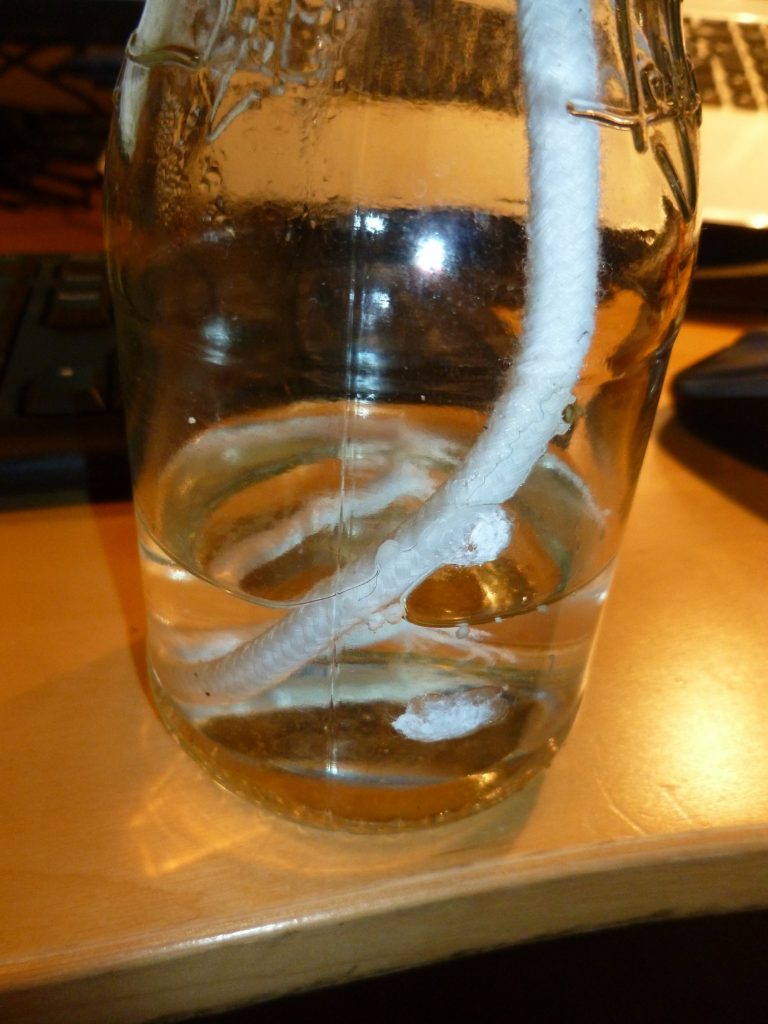
A low dose of African violet fertilizer can be added to the water – about 1/8 strength.
17th Dec
I dropped the pot whilst adding water – maybe not ideal for the experiment, but did mean I could show root development.

8th Jan
Early plant development, despite being dropped (*cough* twice) the plant forms its first leaves.

29th Jan
The plant is growing on well. At some point I’ll take everything out and divide (if needed) and repot in a more traditional medium. They can then be given away or put on ebay.
